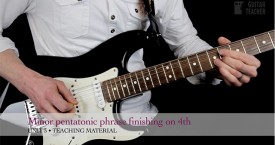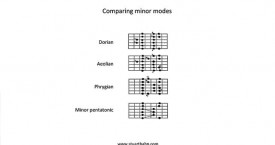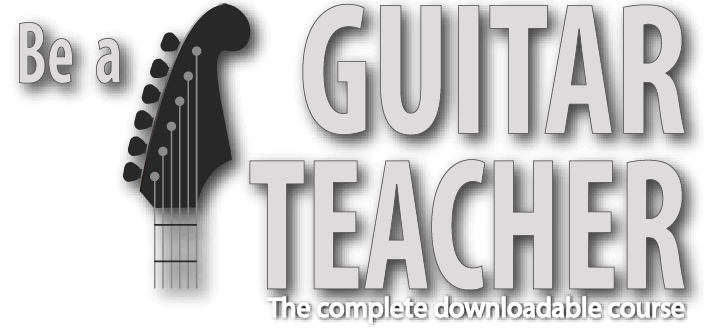Be A Guitar Teacher – Unit 3
Be A Guitar Teacher Unit 3 introduces scales, arpeggios and musical vocabulary; the essential resources of musical improvisation that many of your students will need to learn about.
To be a great guitar teacher, It’s not enough just to understand scales and arpeggios from a theoretical point of view. A professional guitar teacher must be able to clearly communicate how to use scales and arpeggios in order to improvise effectively.
Be A Guitar Teacher unit 3 examines in detail several approaches to teaching seven-note scales, pentatonics and arpeggios. You’ll learn how to immediately have your students apply what they learn to real life musical situations. In particular, how to use specific scales over relevant chord progressions.
A variety of relevant exercises are explained and demonstrated; each for you to incorporate into your own teaching, and to adapt to your students’ ability and tastes.
The teaching of modes is covered from a technical point of view, as well as advice on having your students make immediate practical use of them. Numerous demonstrations are again provided throughout.
Alongside scales and arpeggios, Unit 3 also examines the concept of licks and how to teach your students to create variations of musical phrases.
Finally, unit 3 also discusses the teaching of entire guitar solos, and touches on the beginnings of technique and music theory; both of which will be examined more detail in later units.
Pentatonic scales, licks and arpeggios
- Introduction to teaching scales on guitar
- Introduction to pentatonics on guitar
- Pentatonics in context
- Introducing seven-note scales
- Teaching improvisation with scales
- Teaching guitar licks
- Creating variations of licks
- Licks for every scale?
- Modes of the major scale
- Teaching arpeggios to guitarists
Teaching guitar solos
- Introduction to teaching guitar solos
- Which guitar solos to teach?
- The balance between solos and theory





